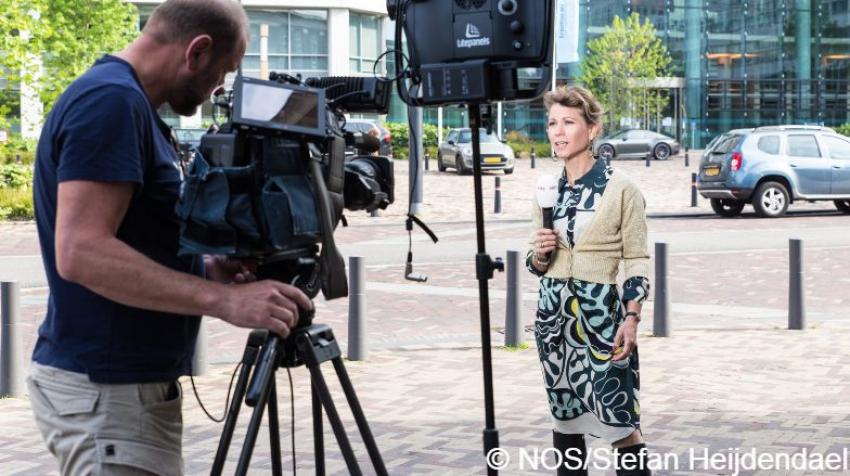For journalists across the world, the COVID-19 pandemic is an unprecedented news story. The relentless news cycle, an ‘infodemic’ of misinformation, let alone the personal challenges of a pandemic which affects each and every one of us, have made this one of the most unique stories reporters will likely ever tell.
“From a journalistic point of view, it is probably one of the biggest events I will cover,” says Kysia Hekster, a TV reporter at Dutch public broadcaster NOS.
While thousands of employees work from home during the pandemic, many journalists have no other choice but to head into their studios, newsrooms or out to the field.
“I have not stopped since lockdown. A journalist’s job is of course to cover what makes the headlines, and to do so, you have to be on duty,” explains Leslie Rijmenams, a presenter at French-speaking Belgian radio station Nostalgie.
Reuters Chief photographer for the Benelux, Yves Herman, covered the pandemic almost daily for several months, reporting from hospitals, retirement homes, funeral services and morgues while wearing full protective gear.
“Despite the risks, I felt it was a really important subject to cover. To my knowledge, it is one of the only stories in the world, except perhaps the Second World War, which affects absolutely everyone,” he tells UNRIC.

Yves Herman, Reuters Chief photographer for the Benelux. Photo courtesy and copyright PHOTONEWS/Vincent Kalut
Infodemic and aggressions
Beyond the intensity of reporting on the virus, journalists must also contend with battling what the World Health Organization describes as an ‘infodemic’. Misinformation, disinformation and rumours can spread quickly and widely during a health emergency.
“You can find anything on the internet. On social media, people share things they have not fully read,” says Cordula Schnuer, a reporter at Delano, an English-language magazine and online publication in Luxembourg. “Finding a reliable source or news outlet you can trust is important.”
For some media outlets, the pandemic has even led to a rise in violent, aggressive behaviour towards teams on the ground. NOS was forced to remove its logo from its satellite trucks as it attracted violent behaviour from a group who believe the virus is a hoax and that NOS is “fake news”.
“It is very threatening to the freedom of media, the freedom for independent journalism and therefore also for democracy. It is unacceptable,” says Hekster.

A resident at a Belgian nursing home enjoys a hug through a wall made with plastic sheets. Photo courtesy and copyright Reuters/Yves Herman
Glimmers of hope
As more of us search for information about the virus, media such as NOS have witnessed a significant spike in audience numbers. However, members of the public also risk being oversaturated with information.
“I hear people around me not watching the news because they feel totally helpless,” says Hekster.
In such a climate, stories highlighting potential solutions, or which offer a glimmer of hope can help raise spirits.
Yves Herman photographed a 103-year-old former doctor who raised funds while walking the distance of a marathon in his garden. He also cites how residents of a Belgian retirement home were able to soothe the pain of physical distancing measures by embracing their loved ones through a ‘hug curtain’. The plastic sheet allowed families to hold each other for the first time in months.
“It was extraordinary,” Yves Herman recounts. “I saw people moved to tears. It was their only way to have physical contact with someone important to them.”

103-year-old Belgian former general practitioner Alfons Leempoels walks in his garden to raise money for scientists researching COVID-19. Photo courtesy Reuters/Yves Herman
Constructive journalism
Reporting information is a journalist’s top priority, but when providing context, perspectives, and potential solutions, they also have the chance to be constructive.
“Although a news item can be alarming, we have the power to add another layer or to remain moderate,” explains presenter Leslie Rijmenams, who is also the co-founder of New6s, a Belgian association which promotes constructive journalism among media professionals.
While the risks of the virus should not be underestimated, she adds, constructive journalism might offer an alternative path to make the situation more bearable.
“By getting the public on board, by giving hope, and having them realise they are part of the solution, we will succeed in beating this virus together,” she says.




